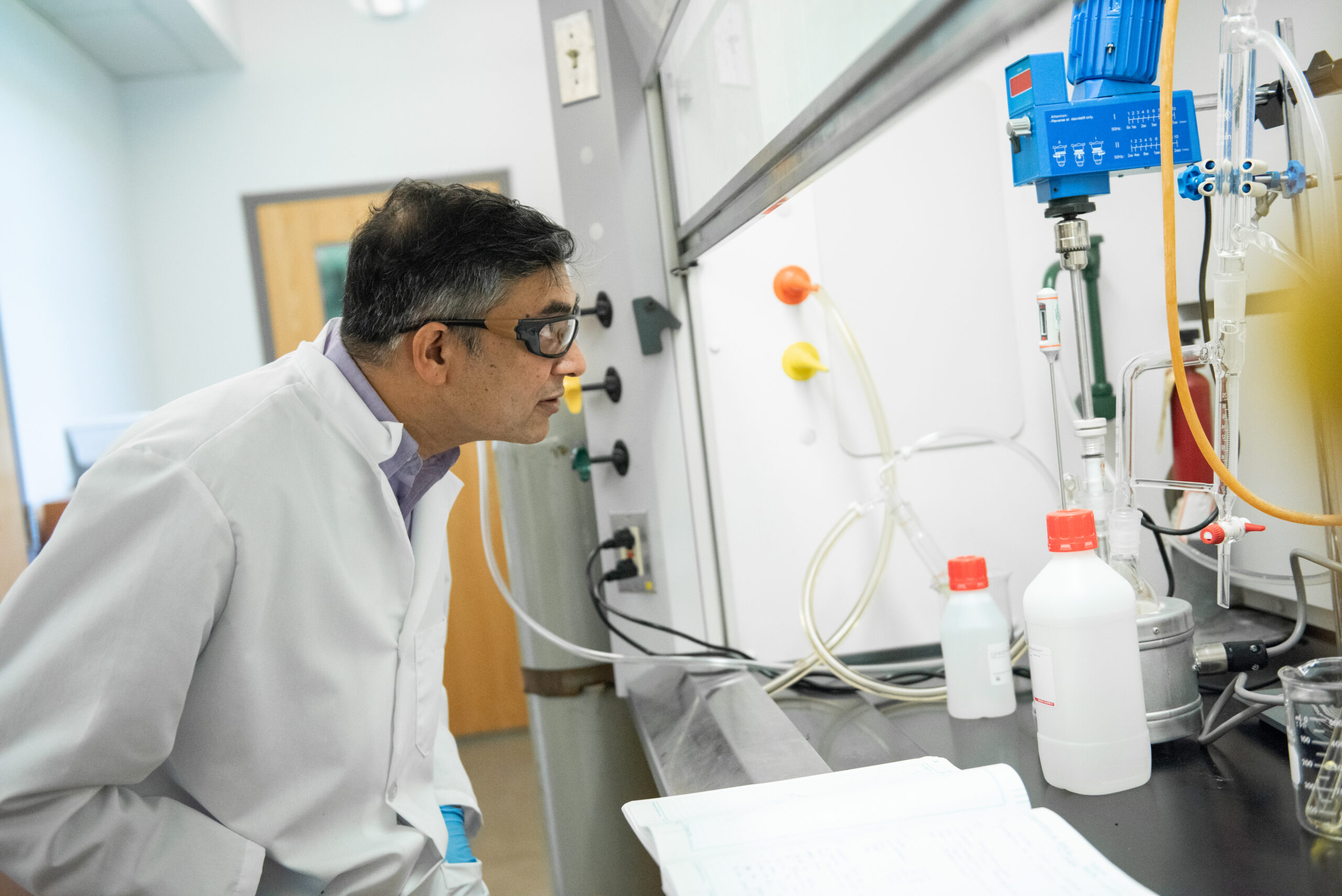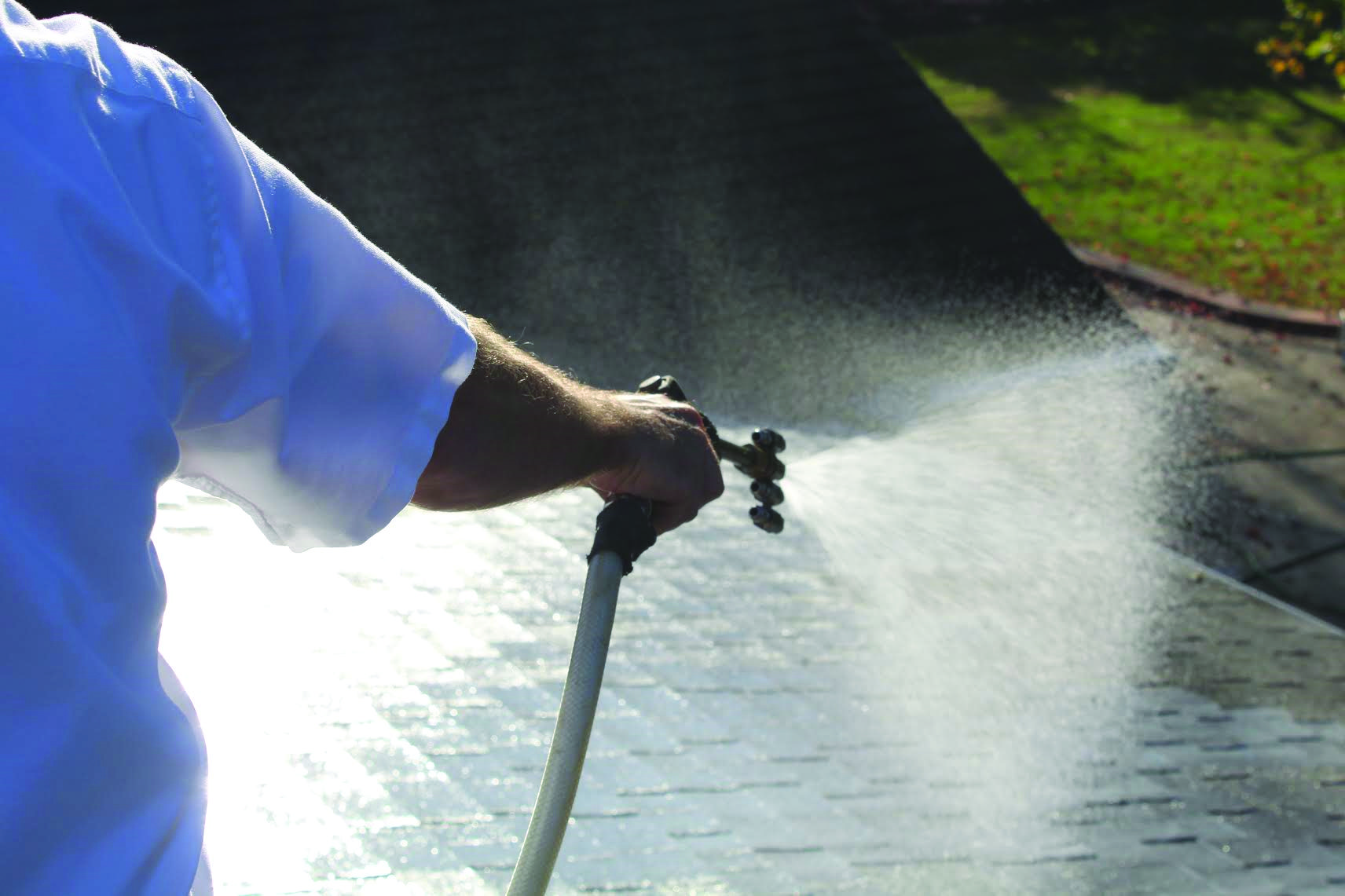Longtime OSC Partner Helps Bring Soy-Based Success

Few people have worked with the Ohio Soybean Council (OSC) and soybean checkoff longer than Dr. Ram Lalgudi. Lalgudi, who works with OSC on the development of new uses for soybeans, has collaborated with the checkoff since 2003. He started out at Battelle, a Columbus-based science and technology development company, and has since started his own company, Aries Science and Technology. His first project was developing a soy-based pressure-sensitive adhesive.
“I feel very fortunate that I’ve been able to continue working on soy-based research funded by the Ohio soybean checkoff,” Lalgudi said.
Lalgudi went on to explain that he works strategically with OSC to create sustainable consumer and industrial products using soy-based feedstocks. In fact, Lalgudi has even assisted in commercializing OSC-funded projects like Soy-PK, a safer replacement for BPA in can coatings; Roof Maxx, a soy-based roof rejuvenator; and EnzoMeal, an aquafeed that is easier to digest than standard fishmeal. OSC licensed EnzoMeal to Matrix Sea Food India Ltd. in 2018. Matrix has a goal of producing 50,000 tons of EnzoMeal annually by 2020 — which will require more than 1 million pounds of soybeans.
Lalgudi pointed out that much of the inspiration for his projects comes from consumer demand. “Today, consumer awareness forces many industries to develop non-toxic, environmentally-friendly and sustainable products,” Lalgudi explained. “The checkoff investments encourage researchers like me to develop soy products that address consumer demands. Furthermore, OSC encourages researchers to work directly with industrial partners to bring soy-based solutions for an existing problem.”

The process is two-pronged. “First, we identify commercial companies that are currently using or could potentially use soy-based products. We reach out to those companies; present our capabilities and ask about their unmet needs,” Lalgudi explained. “We prioritize the needs and present our solution with opportunities and risks to the OSC board for approval.” Researchers also conduct market research to ensure that the products created are what consumers want.
However, he explained that research ideas have also come directly from farmers, like the idea for EnzoMeal which was suggested to him by Keith Kemp, a Preble County farmer and OSC board member.
For Lalgudi, EnzoMeal has proven to be one of the most fascinating projects to work on. “I learned a lot during the product development and struggled to find a producer who can produce our technology on a larger scale,” Lalgudi said. “I received tremendous support from OSC board members and staff during the EnzoMeal product development.”
Lalgudi described how fortunate he feels to work on checkoff-funded projects to help Ohio soybean farmers. “In my new role, I have the freedom to directly work with commercial companies and identify the research areas that will bring bigger and quicker returns on checkoff dollars,” he said. “OSC’s board, which is totally farmer-run, also encourages us to conduct our own internal projects, which helps to identify future needs, and perform research that will utilize larger volumes of soybeans.”

Lalgudi doesn’t see the opportunities for soy-based products going away any time soon. “The benefit of using soy is that it is sustainable and provides performance features that are not typically available from petroleum-derived chemicals,” Lalgudi said.
He went on to say that the demand for non-toxic and environmentally-friendly products will only increase in the future, with both consumer demand and environmental regulations playing roles in the demand.
More and more, consumers are looking for greener, healthier alternatives to existing products. Recent polling shows that 71% of Americans would prefer to purchase a bioproduct rather than a petroleum or chemical-based product if the cost is equivalent. OSC is ready to help meet these consumers demands, which helps Ohio farmers increase the profitability of their soybeans.
Soy is versatile, which gives it a leg up in many ways. “Beyond being green and sustainable, it provides functional benefits without affecting the consumer health and environment,” Lalgudi said.
The best part about developing soy-based products? For Lalgudi, it’s seeing the product go to market. “The greatest accomplishment is to see the product we developed using checkoff funds reach the customer and then receive kudos from the customers,” he said. He also mentioned that it
is an honor when OSC-developed products receive accolades, like R&D 100 Awards, the Presidential Green Chemistry Award and several others from reputed organizations. “This means a lot for researchers like me, and I am very thankful to the board for their support and OSC staff for the constant encouragements.”
Learn more about OSC’s investment in soy-based research here or contact OSC’s Director of Product Development and Commercialization, Barry McGraw, at bmcgraw@soyohio.org.

